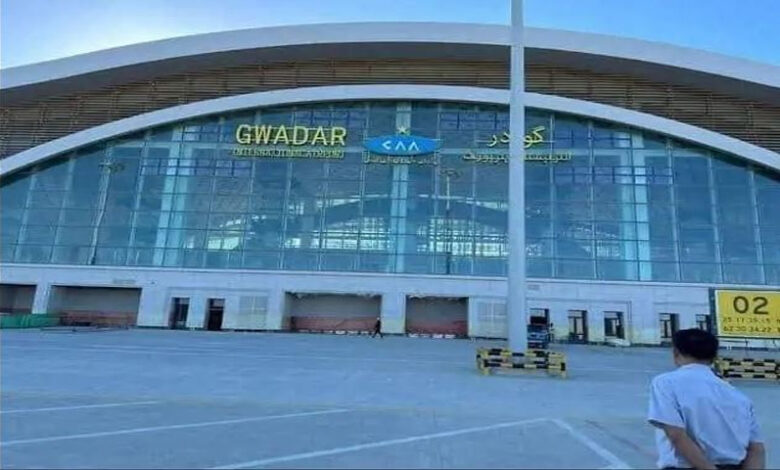Gawadar International Airport Faces Setback Due to Delays in Commercialization, Critics Point to Lack of Action

Karachi:The **New Gwadar International Airport**, developed with a generous grant of **$230 million** from China, is facing significant challenges in becoming fully operational due to the **failure of Civil Aviation** and **Port Authorities** to hire consultants for its marketing and commercialization. As a result, the airport, which was inaugurated last month by **Prime Minister Shehbaz Sharif** and **Chinese Premier Li Qiang**, remains largely inactive.
According to a report by **Dawn News**, during a review meeting, **Planning Minister Ahsan Iqbal** expressed concerns after seeing a two-page presentation presented by government officials. The presentation mostly consisted of paperwork detailing the facilities at the airport, with very little in terms of actual progress or operational plans. This lack of a coherent strategy for the airport’s commercialization has led to frustration among officials, especially as the airport has the potential to be a key asset for both regional and international connectivity.
The government’s delay in developing a comprehensive plan to commercialize the airport has drawn criticism. In an official statement, the government emphasized the importance of swiftly moving towards a functional model, pointing to the **China-Pakistan Economic Corridor (CPEC)** and **Gwadar’s strategic location** as key factors that could make the airport a crucial hub for regional trade and travel. However, despite the significant Chinese investment and the airport’s inauguration, it is still far from achieving its potential.
### **Plans for Commercialization in Limbo**
At the review meeting, officials highlighted some positive steps toward commercialization. They revealed that **cargo sheds**, **courier services**, and **traffic guidance systems** had been approved for placement in the administration block. Furthermore, **cold storage** facilities had been put out to tender, and bids were being sought from commercial companies for leasing spaces for **warehouses**, **hotels**, and **maintenance and repair** centers. **Pakistan State Oil (PSO)** has also been allocated space for fuel supply operations.
However, these developments are far from sufficient to turn the airport into a commercially viable entity. The long delays in the creation of a clear plan for **marketing**, **promotion**, and **commercial partnerships** are holding back the airport’s potential to become an economic and logistics hub. Without these crucial steps, the airport remains largely underutilized.
### **Inauguration and Strategic Importance**
The **Gwadar International Airport** was officially inaugurated by **Prime Minister Shehbaz Sharif** and **Chinese Premier Li Qiang** during a **Shanghai Cooperation Organization (SCO)** summit last month. Speaking at the virtual ceremony, **Premier Li Qiang** praised the completion of the airport as a significant milestone in the **China-Pakistan relationship**. He noted that the project reflected the **strong bond** between the two nations and highlighted Gwadar’s potential as a key development hub in the region. **Premier Li** also reaffirmed China’s commitment to continuing its support for Pakistan’s development.
The **Gwadar International Airport** is part of the larger **China-Pakistan Economic Corridor (CPEC)** initiative, which seeks to enhance trade connectivity between China, Pakistan, and beyond. The airport, strategically located near the **Gwadar Port**, is expected to play a vital role in connecting regional markets and facilitating international trade.
### **Future Prospects and Concerns**
Despite the promising infrastructure, critics argue that the **lack of actionable plans** and **government delays** are preventing the airport from achieving its potential. As **Pakistan’s development** is closely linked to the success of projects like the Gwadar airport, the government’s failure to act swiftly could hinder broader economic growth in the region.
For now, stakeholders are hoping that **Civil Aviation Authority (CAA)** and the **Pakistan Airport Authority (PAA)** will soon move forward with a clear roadmap to commercialize the airport and ensure its success as a regional and international hub. Until then, the airport remains largely underutilized, its full potential waiting to be realized.






